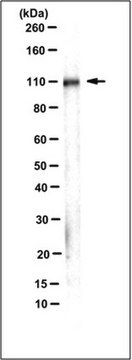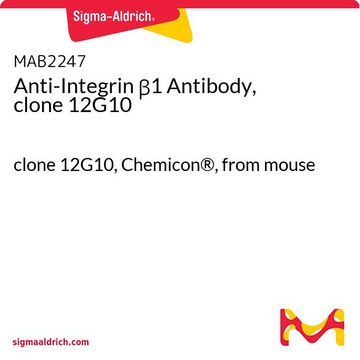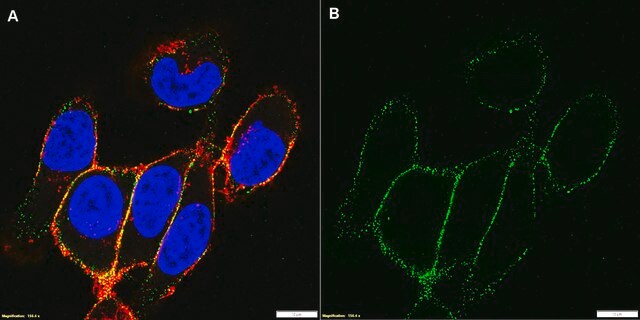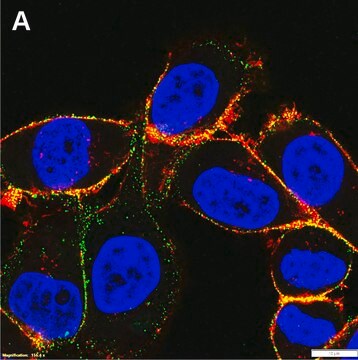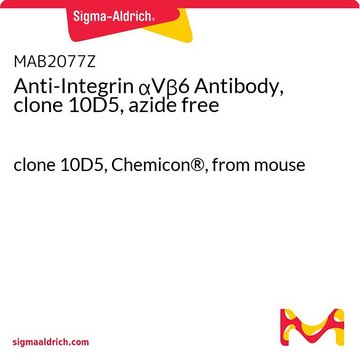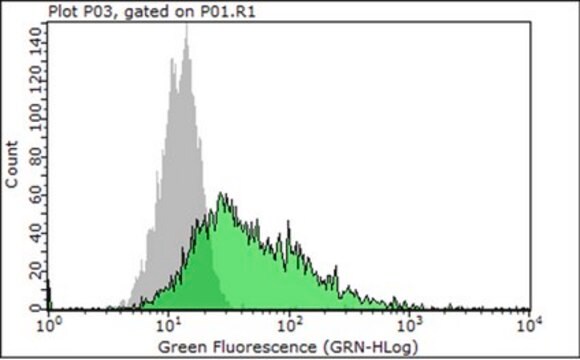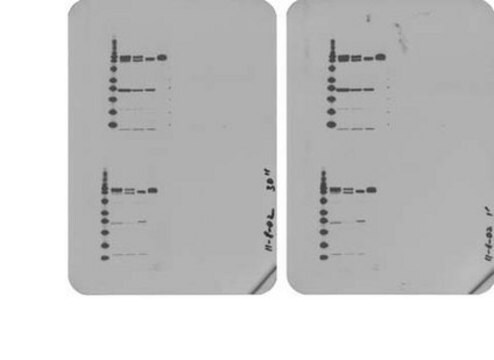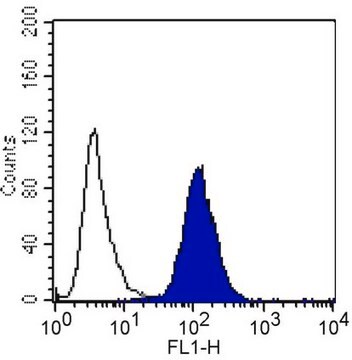MAB1959
Anti-Integrin β1 Antibody, clone P5D2
clone P5D2, Chemicon®, from mouse
Synonim(y):
CD29, MAB1959Z
About This Item
Polecane produkty
pochodzenie biologiczne
mouse
Poziom jakości
forma przeciwciała
purified immunoglobulin
rodzaj przeciwciała
primary antibodies
klon
P5D2, monoclonal
reaktywność gatunkowa
human
producent / nazwa handlowa
Chemicon®
metody
ELISA: suitable
flow cytometry: suitable
immunocytochemistry: suitable
immunohistochemistry: suitable
immunoprecipitation (IP): suitable
izotyp
IgG2bκ
numer dostępu NCBI
numer dostępu UniProt
Warunki transportu
wet ice
docelowa modyfikacja potranslacyjna
unmodified
informacje o genach
human ... ITGB1(3688)
Powiązane kategorie
Opis ogólny
Specyficzność
Immunogen
Zastosowanie
Immunohistochemistry: A representative lot of this antibody clone was used in immunohistochemistry (acetone fixation, no paraffin embedding).
ELISA: A representative lot of this antibody was used in ELISA.
Immunocytochemistry: A representative lot of this antibody clone was used in immunocytochemistry (paraformaldehyde fixation at less than 4%).
Functional Activity Assay: A representative lot of this antibody clone was used in cell attachment assay of SV-HFO cells with a characteristic spread morphology. In the presence of function-blocking mAbs to β1 integrin (P5D2), the cells attached but no longer spread, and displayed a rounded morphology with many cytoplasmic projections (Iba, K. et al., 2000).
Cell Structure
Integrins
Jakość
4 µg of the antibody was used to detect Integrin β1 in 1x10^6 A431 cells.
4 µg of the antibody was used to detect Integrin β1 in 1x10^6 HeLa cells.
Postać fizyczna
Przechowywanie i stabilność
Komentarz do analizy
Human tonsil, human skin tissue
A431 & HeLa Cells
Inne uwagi
Informacje prawne
Oświadczenie o zrzeczeniu się odpowiedzialności
Nie możesz znaleźć właściwego produktu?
Wypróbuj nasz Narzędzie selektora produktów.
polecane
Kod klasy składowania
10 - Combustible liquids
Klasa zagrożenia wodnego (WGK)
WGK 2
Temperatura zapłonu (°F)
Not applicable
Temperatura zapłonu (°C)
Not applicable
Certyfikaty analizy (CoA)
Poszukaj Certyfikaty analizy (CoA), wpisując numer partii/serii produktów. Numery serii i partii można znaleźć na etykiecie produktu po słowach „seria” lub „partia”.
Masz już ten produkt?
Dokumenty związane z niedawno zakupionymi produktami zostały zamieszczone w Bibliotece dokumentów.
Nasz zespół naukowców ma doświadczenie we wszystkich obszarach badań, w tym w naukach przyrodniczych, materiałoznawstwie, syntezie chemicznej, chromatografii, analityce i wielu innych dziedzinach.
Skontaktuj się z zespołem ds. pomocy technicznej